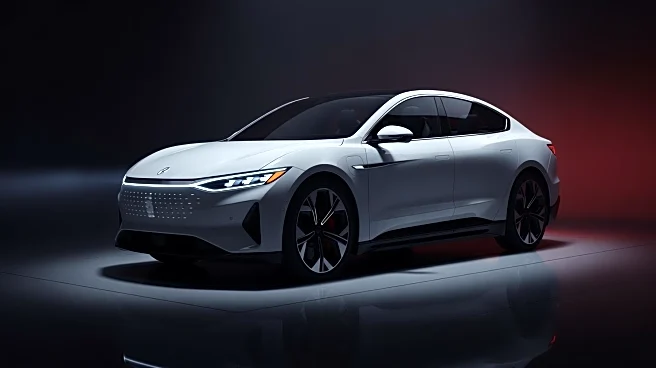What's Happening?
Car prices in the United States have reached an unprecedented average of $50,080 in September, marking the first time they have surpassed the $50,000 threshold. This increase is largely attributed to a surge in electric vehicle (EV) purchases, driven
by consumers rushing to buy before the expiration of a $7,500 federal tax credit on September 30. According to Kelley Blue Book, EVs sold for an average of $58,124, contributing significantly to the overall rise in car prices. The year-over-year increase in September was the largest since spring 2023, influenced by higher luxury sales and tariffs. With the expiration of the EV incentive, experts like Brian Moody from Kelley Blue Book suggest that electric vehicle sales may decline, potentially causing average transaction prices to dip below $50,000 later in the year.
Why It's Important?
The rise in car prices has significant implications for consumers and the automotive industry. As new car prices climb, the financial burden on consumers increases, with monthly costs potentially exceeding $1,000 when factoring in insurance, maintenance, and fuel. This trend may lead to a shift in consumer behavior, with more individuals considering used or leased vehicles to offset costs. The expiration of the EV tax credit could slow the adoption of electric vehicles, impacting the industry's push towards sustainable transportation. Additionally, the increase in luxury sales and tariffs suggests broader economic factors influencing the automotive market, which could affect consumer spending and industry strategies.
What's Next?
With the expiration of the EV tax credit, the automotive industry may experience a shift in consumer demand, potentially leading to a decrease in electric vehicle sales. This could prompt manufacturers to adjust pricing strategies or offer new incentives to maintain market interest. As car prices continue to rise, consumers may increasingly turn to used or leased vehicles, impacting new car sales. The industry may also face pressure to innovate and reduce production costs to make vehicles more affordable. Stakeholders, including policymakers and manufacturers, will likely monitor these trends closely to adapt to changing market dynamics.
Beyond the Headlines
The rising car prices and expiration of the EV tax credit highlight broader economic and environmental challenges. The push for electric vehicle adoption is crucial for reducing carbon emissions and promoting sustainable transportation. However, financial barriers may hinder progress, necessitating new policies or incentives to support consumers and manufacturers. The situation underscores the need for a balanced approach to economic growth and environmental sustainability, as stakeholders navigate the complexities of market demands and climate goals.















